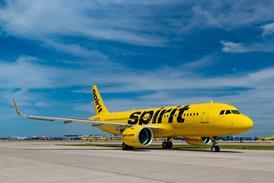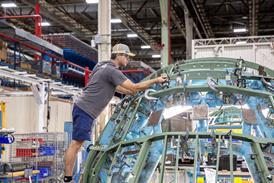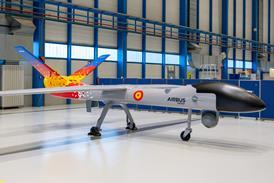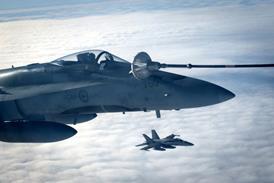As their cargo customers get more powerful, what tactics can the airlines use to compete with these huge global integrator-forwarder groups?
It used to be fashionable for speeches at air cargo conferences in the late 1990s to warn that the global freight industry would soon be dominated by five or six large companies. Now that warning seems to be coming true.
In particular, three of the four major express operators – dubbed “the integrators” in the air cargo industry, because they offer an integrated door-to-door service with their own aircraft – have made a decisive move into forwarding and logistics, and could soon be the biggest cargo customers for airlines. How will so-called “traditional” carriers (in other words any carrier that is not DHL, FedEx or UPS) cope?
To some extent that world has already arrived. In the past five years, Deutsche Post, the German post office group that also owns DHL, has been on an extraordinary buying spree, purchasing two freight forwarding giants – AEI and Danzas – and a few regional heroes too.
Merged into the somewhat awkwardly named DHL Danzas Air and Ocean, this super-forwarder was already topping the rankings of IATA export revenues by 2003, with revenues of close to $1.7 billion, well ahead of second placed Nippon Express on $1.2 billion. But now Deutsche Post is bidding to buy third-placed Exel. Together, this would make an entity more than twice the size of its next rival in air freight purchasing terms, and with a share of some 11-12% of the market.
The bigger picture
If air freight needed any reminders of its insignificance in the wider scheme of things, creating such a major air freight purchaser seems, on the face of it, to be almost incidental to Deutsche Post’s strategy in pursuing Exel. It is the latter’s $6.7 billion of contract logistics business that is its real target, which will push Deutsche Post/DHL into the number one spot in this market. Exel itself calculates that the total global freight market is worth $550 billion, compared to the often-quoted figure of $40 billion for air freight alone.
UPS and TNT also have their eyes on this market. In 2004, UPS bought Menlo Logistics, formerly Emery Worldwide, a forwarder ranked 13th in the world in 2003 by IATA export revenues. UPS had already acquired another US-based global forwarder, Fritz, ranked 10th in the world. Together Menlo and Fritz, both now rebranded as UPS Supply Chain Solutions, will rank about fourth in the world by air freight spend.
TNT, the world’s second-largest contract logistics player after Exel, with a major presence in key air freight sectors such as automotive and hi-tech electronics, also bought a somewhat smaller forwarder in 2004 – Wilson, now rebranded as TNT Freight Management. The market expects both TNT and UPS to make further acquisitions of this type and pundits also predict that FedEx will enter the race too.
For airlines, there are two potential areas of concern in these developments. Firstly the new groupings will have potentially formidable buying power. The 10-12% share of the market for DHL if it buys Exel underestimates the true picture, as DHL also buys substantial amounts of third-party capacity, including belly capacity on passenger flights, for its express business. TNT and UPS do the same. If these companies combine their express and air freight spends, they could have powerful leverage over the traditional carriers.
Secondly, UPS and to a lesser extent DHL, though not TNT, also have intercontinental freighter networks of their own for their express businesses. Supposing they took it into their heads to move more of the conventional palletised air freight of their forwarding businesses by this method too?
Do the integrators in fact have any such intentions? The first thing that might be said is that their move into forwarding and logistics could be seen as defensive, not offensive: an admission that the express business is not enough. UPS, for example, may seem a giant in total revenues (see table on previous page), but 73% of that comes from the US express package market, which has limited growth potential.
“Some years ago, we determined that the express business was valued at $100 billion, whereas global transportation was $3 trillion,” says Tom O’Malley, UPS vice-president cargo for the Americas region. “So to grow as an organisation, we needed to compete for the $3 trillion.” Both Deutsche Post/DHL and TNT similarly are trying to diversify away from their core businesses, which are the German and Dutch post offices respectively.
But there is no doubt that having made that decision, all three organisations are aiming to be a one-stop shop for all freight and logistics needs all over the world. UPS calls it “Synchronising Global Commerce”. All are now using their well-known express brands for their other freight businesses as well, signalling their intention to create a single identity with shippers.
Synergies in purchasing will certainly follow. Jeff Hoogesteger, managing director of TNT Freight Management, says it has now taken over the purchasing of air freight capacity for TNT Logistics, while in turn Freight Management is making more use of TNT’s express trucking network in Europe. DHL says it is trying to harmonise the preferred carrier lists of its express and forwarding arms as much as possible.
UPS Airlines also admits that combining the purchasing power of its express arms and the former Menlo operation is something it is looking at.
Airlines can not help but be a little worried by such trends, though they put a brave face on it. “Deutsche Post is already our biggest customer, not just for forwarding, but for express, night mail and global mail,” says Lufthansa Cargo. “If they buy Exel, another of our global forwarding partners has gone.”
Robert van de Weg, senior vice-president sales and marketing at Cargolux, meanwhile, is also concerned. “The stakes are getting higher,” he says. “In a fragmented market, if you lose one customer, there is always another. But now it is more a case of all or nothing. Only the more competitive airlines have a chance to survive.”
Freight forwarding
An even bigger worry for airlines would be if the integrators started to channel more of their freight forwarding volumes through their own air freighter networks. This already happens to some extent. DHL has long offered capacity on its European overnight freighters to forwarders, while UPS carries heavy freight on its transpacific flights. So far these deals are open to any forwarder, but could become more exclusive if the integrator’s in-house forwarding arms were able to concentrate their freight flows on their parent company’s air hubs, or if having a proprietary freighter network comes to be seen as an advantage by shippers.
UPS says its recent orders of 10 A380 freighters and eight 747-400Fs was at least partly inspired by the desire to carry more conventional air cargo. “These larger aircraft are to move pallets as well as packages,” it says. “They give us more flexibility to meet all our customer needs.” TNT, which currently only operates a European air network, is also thought to be close to ordering two 747-400Fs.
UPS too concedes that if heavy freight can be flown on UPS’s existing network, there are “great efficiencies” to be gained. In the USA, concrete action to this end is already being taken. UPS is in the process of transferring Menlo’s old domestic US freighter operation from Dayton, Ohio to its Louisville hub, and is building a 65,000m2 (700,000ft2) conventional freight facility there to accommodate it. Similar developments could follow at other UPS hub.
Having said that, this trend should not be over-emphasised. Express and freight forwarding are still very different businesses with different capacity needs, and none of the integrators is talking about merging their air freight needs into one combined fleet, just about exploiting synergies where they can be found. Indeed, UPS has not even decided yet whether to merge heavy and express freight on the same flights after the move from Dayton; it could still keep the old Menlo network going out of Louisville.
And, as van de Weg points out, there are also lots of places where both express operators and forwarders need to fly cargo to where they will lack the volumes for a freighter of their own. “The key question is can they consolidate their business into a particular hub,” he says. “They definitely won’t be able to do that in San Francisco or Ndjamena, and quite a lot of our business is on lanes like that.”
If integrator-forwarder groups do dominate air freight, what can airlines do? One possibility, as demonstrated by Lufthansa and Cathay Pacific, is the “if you can’t beat them, join them” approach. In 2004, Lufthansa Cargo and DHL set up a joint venture whereby the German carrier operates five long-haul freighter routes for the integrator, with both sharing responsibility for filling the aircraft.
Lufthansa gets to share risk on freighter routes, and DHL gets a long-haul network without having to operate its own aircraft. “It is a huge chance for us to be able to have this co-operation with DHL,” says Lufthansa Cargo. “We also get paid in euros, which is good with the dollar so weak.”
DHL also works with Cathay Pacific, through a 40% stake in the latter’s regional freighter airline, Air Hong Kong, which operates on Asian routes for the integrator. In addition, Cathay operates some overnight flights to Asian destinations with limited passenger loads where the belly space is sold entirely to DHL. “The partnership provides a good fit between Cathay’s operational expertise and network assets, and DHL’s logistics and express business expertise,” says Cathay’s director and general manager cargo Ron Mathison.
Economies of scale
From this he concludes that the best strategy for air cargo carriers is to get bigger to deal with their new larger customers. “The risk is that we will gradually be marginalised by the scale and pricing power of the integrators,” he says. “What we must do is build our network and service quality. Scale helps to spread fixed cost and gives more purchasing power and pricing leverage in negotiating capacity agreements.”
Of course, the best way for carriers to gain scale, as Lufthansa Cargo points out, would be to be allowed to merge with or take over each other just like their customers are doing. “We are seeing a huge consolidation among our customers, and we need it to happen in the airline industry too,” says the carrier. But this, of course, is exactly what carriers are unable to do, due to bilateral and ownership restrictions.
Whether that will mean the new breed of super-customers will end up dominating their fragmented airline suppliers remains to be seen, but one caveat comes from Kuehne+Nagel, one of the major global freight forwarders which is – not yet, at least – owned by an integrator.
Its senior vice-president global airfreight Roland Bischoff, casts doubt on whether the end-customer, the shipper, really wants to do all its business with one super-integrator. “Is it really an advantage to have all your eggs in one basket?” he asks. “Won’t customers always prefer to use more than one supplier to spread the risk?”
He also points out that if the integrators start to compete in the conventional air freight and forwarding market, they will face the same issues of falling yields and unbalanced traffic that traditional cargo airlines have today.
“Once they are away from the major express lanes, they will be competing on the same territory as conventional airlines and forwarders,” Bischoff says. “The question is, will they really be able to do it cheaper or better?”
PETER CONWAY/LONDON
Source: Airline Business























